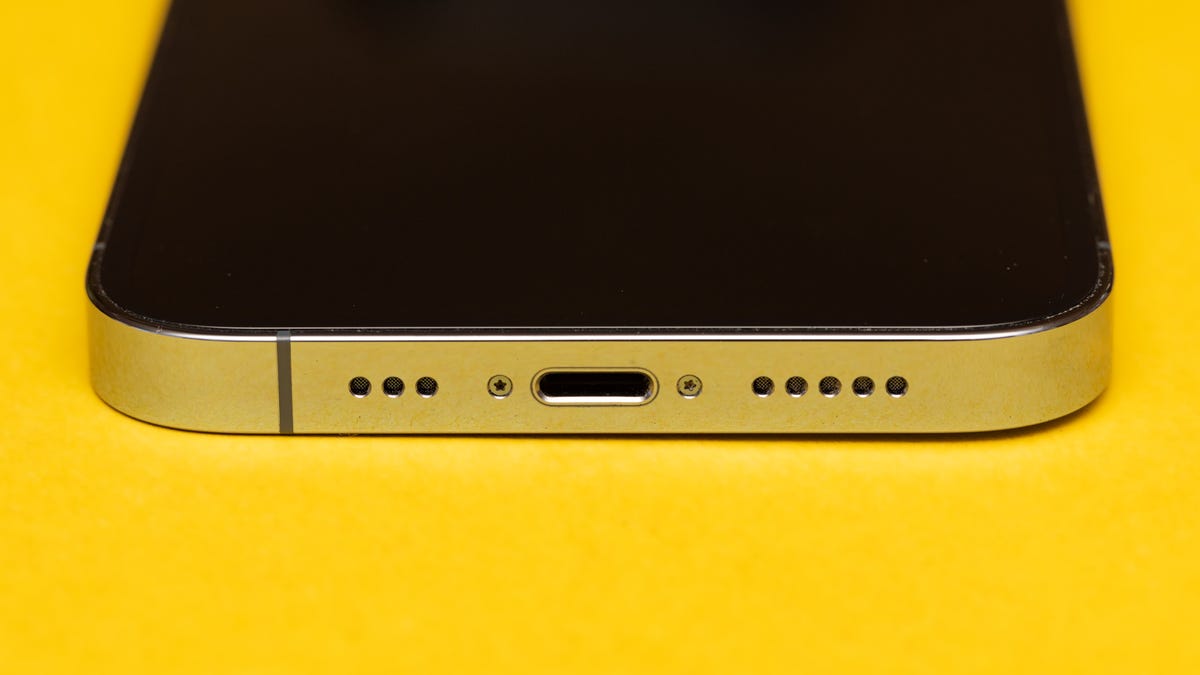This story is part of Focal Point iPhone 2022, CNET’s collection of news, tips and advice around Apple’s most popular product.
Apple evicted the 3.5mm headphone jack from iPhones starting in 2016. This year, it dropped the SIM card slot, relying on eSIM chips for its iPhone 14 smartphones. If you extrapolate, you might expect iPhones to drop the charging and data port next, beginning the era of the portless iPhone.
I sure hope not.
I’m all for progress, but I think it’s best that we keep some of those copper cables in our lives — even though that runs counter to the idea of a sleek and seamless gadget that Apple aspires to and that’s now becoming feasible, as CNET senior editor Lisa Eadicicco points out.
But hear me out. There are three big problems with a portless iPhone: charging inconvenience, slow data transfer and the rejection of wired earbuds. Here’s a look at the situation.
Charging inconvenience
The first big problem with a portless iPhone is that it would be harder to charge.
You may well have charging pads in the kitchen, in the office, in your car, and perhaps even on the nightstand by your bed. You need to charge your phone elsewhere, though: at the airport, in a rental car, at your friend’s house, in a college lecture hall, at a conference. Hauling around the necessary charger and cable for your “wireless” charging is even worse than carrying an ordinary wired charger.
Sure, some venues now have them built in, including coffee shops and airports, but you don’t want to roll the dice on availability. Chances are good, you’d lose.
Wireless chargers also are more expensive, often bulkier and can be finicky about phone placement, even with Apple’s MagSafe technology to align your phone better. On several occasions I’ve woken up in the morning or driven for hours and discovered that wireless charging didn’t work.
Wired charging also is faster, wastes less energy and doesn’t leave my phone piping hot.
If Apple ever dumps its now archaic Lightning port and embraces USB-C port on iPhones, as I expect it will, its charging and data port becomes more useful. I already use USB-C to charge my MacBook Pro, iPad Pro, Framework laptop, Sony noise-canceling earphones, Pixel 6 Pro phone, Pixel Buds Pro earbud case, and Nintendo Switch game console and controllers. When I’m traveling, I always have a USB-C charger with me, and I expect USB-C ports to become more common in airports, planes, hotels, cars and cafes. Don’t hold your breath for a wireless charging pad jammed into an economy class seat.
“There is no question that USB-C is long overdue on an iPhone especially given it is on iPad and Mac,” Creative Strategies analyst Carolina Milanesi said. “It is not always possible to do wireless or MagSafe.”
Data transfer speed
The convenience of wireless data transfer makes it the norm for phones. Gone are the days when we needed to plug our phones into our laptops to synchronize and back up data.
But if you’re one of those creative types Apple shows in every iPhone launch event, shooting 4K video for your indie movie, you’ll appreciate wired data transfer to get that video onto your laptop faster. That’s especially true if you’re shooting with Apple’s ProRes video.
A 1-minute ProRes clip I shot recently is 210MB; imagine how fast you’ll plow through the gigabytes if you’re shooting more seriously. Wired connections can be nice for transferring lots of photos, too, using a tool like Apple’s Image Capture utility or Adobe’s Lightroom photo editing and cataloging software.
Wired earbuds
I know, I know, AirPods or some other wireless earbuds these days are a booming business. But wired headphones remain useful. They’re even a retro fashion statement for some.
I like them because they don’t run out of battery power or suffer from Bluetooth’s flakiness. And they’re way harder to misplace or drop down a street gutter while you’re running to catch the bus.
Wired earbuds are way cheaper. Maybe you can afford $249 second-generation AirPods Pro, but not everyone can. The 3.5mm audio jack is being squeezed off smartphones, but iPhones with USB-C ports would mean it was more likely you could grab a cheap set of earbuds in the airport travel store if you forgot your AirPods.

I’d rather have a USB-C port than this Apple Lightning port on my iPhone, but I’d prefer either compared to no port at all.
Stephen Shankand/CNET
Perhaps there’s room for compromise — one iPhone for the wireless-only crowd and another model for people like me. But Apple doesn’t like to stick consumers with confusing choices, so I’d be surprised.
The case for portless iPhones
There are, of course, some significant advantages we’d get from a portless iPhone.
It would bring a new level of sleekness and reduce the amount of cable fiddling in your life. iPhone cases would be stronger and more impervious to water and dust. Apple would get a little extra interior space it could fill with a bigger battery or other electronics.
“A portless iPhone is probably more structurally rigid and allows for more room for the Taptic Engine or speakers or maybe an antenna,” said Anshel Sag, an analyst at Moor Insights & Strategy.
Apple, which typically doesn’t discuss its future plans, didn’t comment for this story.
Advances in wireless charging and data transfer technologies make a portless iPhone conceivable. More advances are likely, too: better Wi-Fi. Wireless charging that works anywhere in a room, not just on a charging pad. The potential use of ultra wideband positioning technology for fast short-range data transfer, too.
I already enjoy today’s wireless technologies that would make a portless iPhone possible. I just think the drawbacks of relying on them exclusively outweigh the advantages.
The best future is one that keeps that charging and data port. So, Apple, please don’t ditch it, too. And while your engineers are looking at the subject, how about USB-C?




